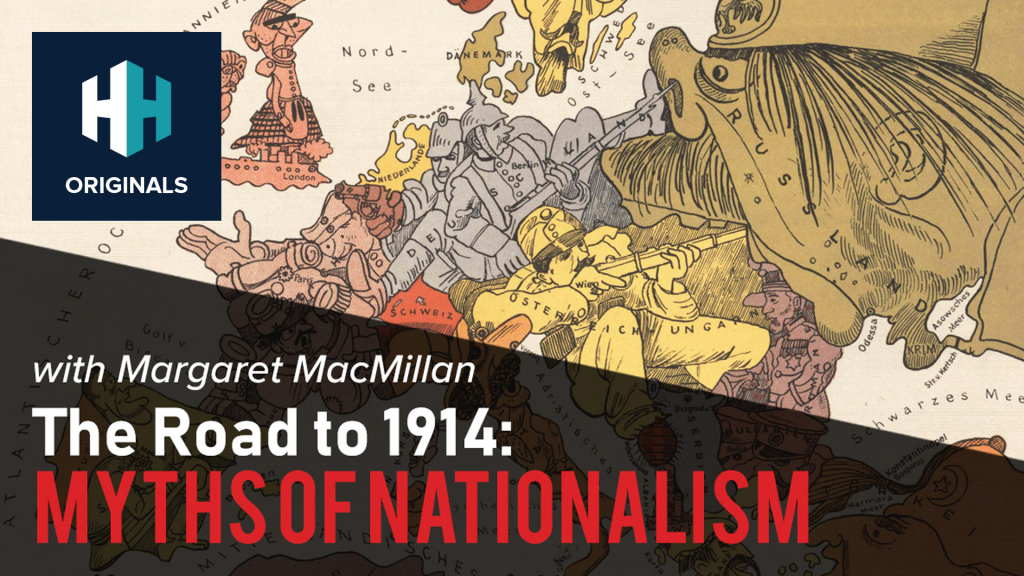
On 20 May 1882, Germany had entered into a Triple Alliance with Italy and Austria-Hungary. Germany was rapidly becoming the predominant social and economic power in Europe, which gave Britain, France and Russia cause for grave concern.
While the three powers didn’t truly ally until World War One proper, they did move into ‘entente’ on the 31 August 1907.
The power bloc of the three nations, supplemented by additional agreements with Japan and Portugal, was a powerful counterweight to the Triple Alliance.

In 1914, Italy resisted pressure from belligerents. The Triplice or “Triple Alliance” combines in 1914 the German Empire, the Austro-Hungarian Empire and the Kingdom of Italy but this pact was only defensive and did not force Italy to go to war with the sides of his two partners. Credit: Joseph Veracchi / Commons.
The fluidity of these allegiances should be stressed. For instance, Italy did not join Germany and Austria during the war, and in 1915 instead joined the entente in the Treaty of London.
Britain
During the 1890s, Britain operated under a policy of “splendid isolation”, but as the threat of German expansionism grew more prominent, Britain began to look for allies.
While Britain had regarded France and Russia as hostile and dangerous enemies during the 19th century, the growth of German military power changed policies towards France and Russia, if not perception.
Gradually, Britain began to align itself towards France and Russia.
The Entente Cordiale resolved spheres of influence in North Africa in 1904, and the Moroccan crises that came later also encouraged Anglo-French solidarity against the perceived menace of German expansionism.
 Watch Now
Watch NowBritain had concerns about German imperialism and the threat it posed to its own Empire. Germany had begun construction of the Kaiserliche Marine (Imperial Navy), and the British navy felt threatened by this development.
In 1907, the Anglo-Russian Entente was agreed, which attempted to resolve a series of long-running disputes over Persia, Afghanistan and Tibet and helped to address British fears about the Baghdad Railway, which would help German expansion in the Near East.
France
France had been defeated by Germany in the Franco-Prussian war in 1871. Germany detached Alsace-Lorraine from France during the post-war settlement, a humiliation that France had not forgotten.
France also feared German colonial expansion, which posed a threat to French colonies in Africa.
To fulfil its revanchist ambitions, it sought allies, and allegiance with Russia could pose the threat of a two-front war to Germany and dissuade their advances.
Russia in turn sought support against Austro-Hungary in the Balkans.

Map of military alliances of Europe in 1914. Credit: historicair / Commons.
Germany, which had previously held agreements with Russia, believed that the ideological difference between autocratic Russia and democratic France would keep the two countries apart, and consequently allowed the Russo-German Reinsurance Treaty to lapse in 1890.
This undermined the system of alliances that Bismarck had established in order to prevent a war on two fronts.
Russia
Russia had previously been a member of the League of the Three Emperors, an alliance in 1873 with Austria-Hungary and Germany. The alliance was part of German Chancellor Otto von Bismarck′s plan to isolate France diplomatically.
This League proved unsustainable because of the latent tension between the Russians and the Austro-Hungarians.

Russian 1914 poster. The upper inscription reads “concord”. In the centre, Russia holds aloft an Orthodox Cross (symbol of faith), Britannia on the right with an anchor (referring to Britain’s navy, but also a traditional symbol of hope), and Marianne on the left with a heart (symbol of charity/love, probably with reference to the recently-completed Sacré-Cœur Basilica) — “faith, hope, and charity” being the three virtues of the famous Biblical passage I Corinthians 13:13. Credit: Commons.
Russia had the largest population, and consequently the largest manpower reserves of all European powers, but its economy was also fragile.
Russia had a long-standing enmity with Austria-Hungary. Russia’s policy of pan-slavism, which cast it as the leader of the Slavic world, also meant that Austro-Hungarian interference in the Balkans antagonised the Russians.
The great fear was that Austria would annex Serbia and Montenegro, and when Austria began to annex Bosnia-Herzegovina in 1908, this fear was amplified.
Russia’s defeat in the Russo-Japanese war in 1905 had prompted concerns about its military, and caused Russian ministers to seek more alliances to secure its position.














